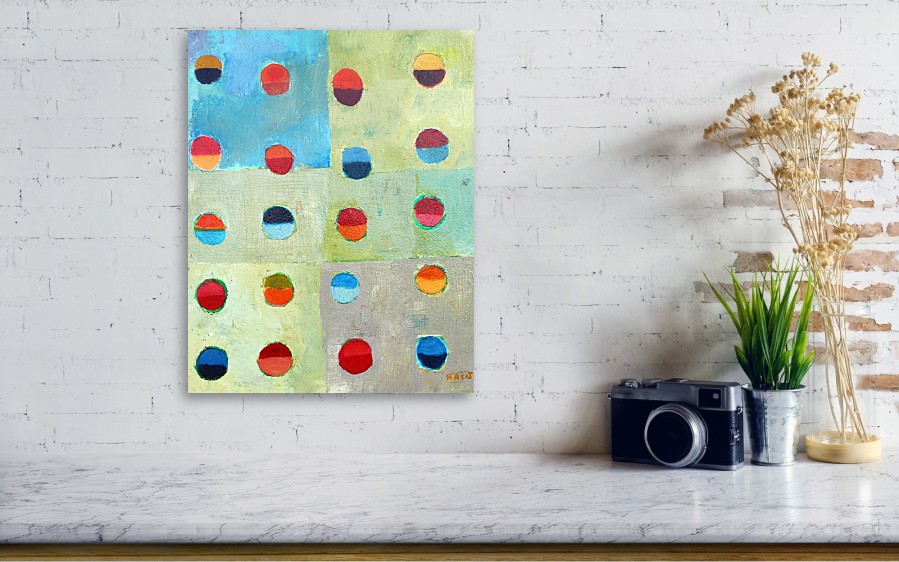The Colorful Art Meaning: Exploring the Significance of Colors in Art Introduction: Art is a form of expression that transcends language barriers and connects people from different cultures and backgrounds. While art can take many forms, one ofthe most powerful ways toconvey emotions and messages is through color. Colorful art meaning can range from conveying deep emotions to representing symbolic values. In this article, wewill delve deeper into the significance of colors in art, exploring their meanings and the emotions they evoke. By understanding the different meanings of colors, we can gain adeeper appreciation for the power of art and its ability to communicate with the viewer. The Psychology of Colors in Art (colorful art meaning) The psychology of colors is a fascinating and complex topic. Colors have a profound effect on our emotions and can convey messages in a way that words cannot. When it comes to art, understanding the psychology of colors is crucial to appreciating the meaning behind the artwork. Here are some of the emotions and messages associated with different colors: Red: Passion and Love Red is apowerful color that has been used by artists throughout history to convey strong emotions and create asense of drama and intensity in their works. In art, red can symbolize a range of feelings suchas love, passion, and desire, aswell as anger, aggression, and danger. Many artists use red in their works to create a sense of urgency and to draw theviewer’s attention to a particular element of the composition. For example, a painting of a red rose might symbolize love and passion, while a red flag might symbolize danger and warning. In addition to its emotional connotations, red is also associated with physical attributes suchas strength, power, and energy. In sports, teams often wear red uniforms to create a sense of intimidation and dominance over their opponents. Red is also a popular color in marketing and branding, as it is believed to increase consumer interest and attention. Overall, the use of red in art is a powerful tool for conveying a range of emotions and messages. Whether it is used to symbolize love, passion, or danger, red is a color that has the ability to capture theviewer’s attention and evoke a strong emotional response. Yellow: Happiness and Energy Yellow is a bright and joyful color that is often associated with sunshine, warmth, and positivity. In art, it can be used to create a feeling of happiness, energy, and optimism. Whether it is used as a dominant color or asan accent, yellow has the ability to add a cheerful and uplifting quality to a piece of artwork. In addition to its emotional connotations, yellow can also represent intelligence and wisdom. In some cultures, yellow is associated with knowledge and learning, and itis often used in educational settings such as schools and universities. In art, yellow can be used to represent creativity and originality, as well as a sense of curiosity and exploration. Yellow is also a popular color in fashion and design, as it is believed to be eye-catching and attention-grabbing. It is often used in branding and marketing to create a sense ofenergy and enthusiasm around a product or service. Overall, the use of yellow in art is a powerful tool for conveying a range of emotions and messages. Whether it is used to represent happiness, intelligence, or creativity, yellow is a color that has theability to capture the viewer’s attention and evoke a positive emotional response. Blue: Tranquility and Trust Blue is a calming and soothing color that is often associated with feelings of tranquility, peace, and trust. In art, blue is often used to create a sense of stability and reliability, and it can beused to convey a range ofemotions, from sadness and melancholy to serenity and calmness. Blue is also associated with intellect and wisdom, and it is often used in academic settings to represent knowledge and learning. In art, blue can be used to represent asense of intellectualism and analytical thinking, aswell as a sense of introspection and contemplation. In addition to its emotional and intellectual connotations, blue is a versatile color that is often used in fashion and design. It can be used to create a sense of professionalism and authority, as well as a sense of serenity and calmness. Blue isalso a popular color in branding and marketing, asit is believed to be trustworthy and reliable. Overall, the use of blue in art is a powerful tool forconveying a range of emotions and messages. Whether it is used to represent tranquility, reliability, or intellect, blue is acolor that has the ability to capture theviewer’s attention and evoke a powerful emotional response. Green: Nature and Growth Green is a color that is deeply connected to nature and the natural world. It represents growth, renewal, and vitality, and it is often used in art to convey a sense of harmony withthe environment. Green can be used tocreate a calming and peaceful atmosphere, and it can also evoke feelings of hope, rejuvenation, and freshness. In addition to its association with nature, green can also represent balance, stability, and endurance. It is a color that is often associated with healing and renewal, and it is believed to have a calming and restorative effect on the mind and body. In art, green can be used tocreate a sense of balance and harmony, and it can be used to represent a sense of perseverance and endurance. Green is also a popular color in fashion and design, as it is believed to be a versatile and adaptable color that can be used in a range of settings. It is often used in branding and marketing torepresent sustainability, health, and wellness. Overall, the use of green in art is a powerful tool for conveying a range of emotions and messages. Whether it is used to represent nature, balance, or endurance, green is a color that has the ability to capture the viewer’s attention and evoke a strong emotional response.







